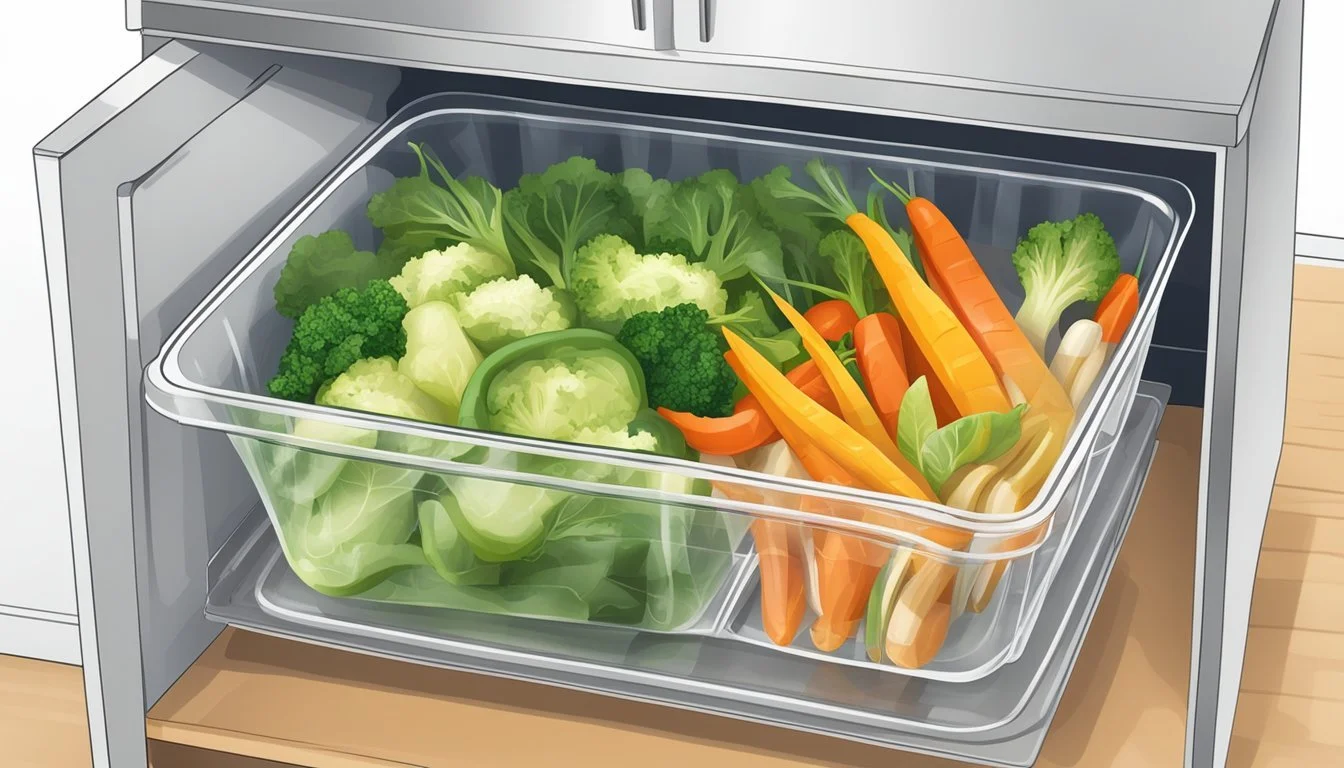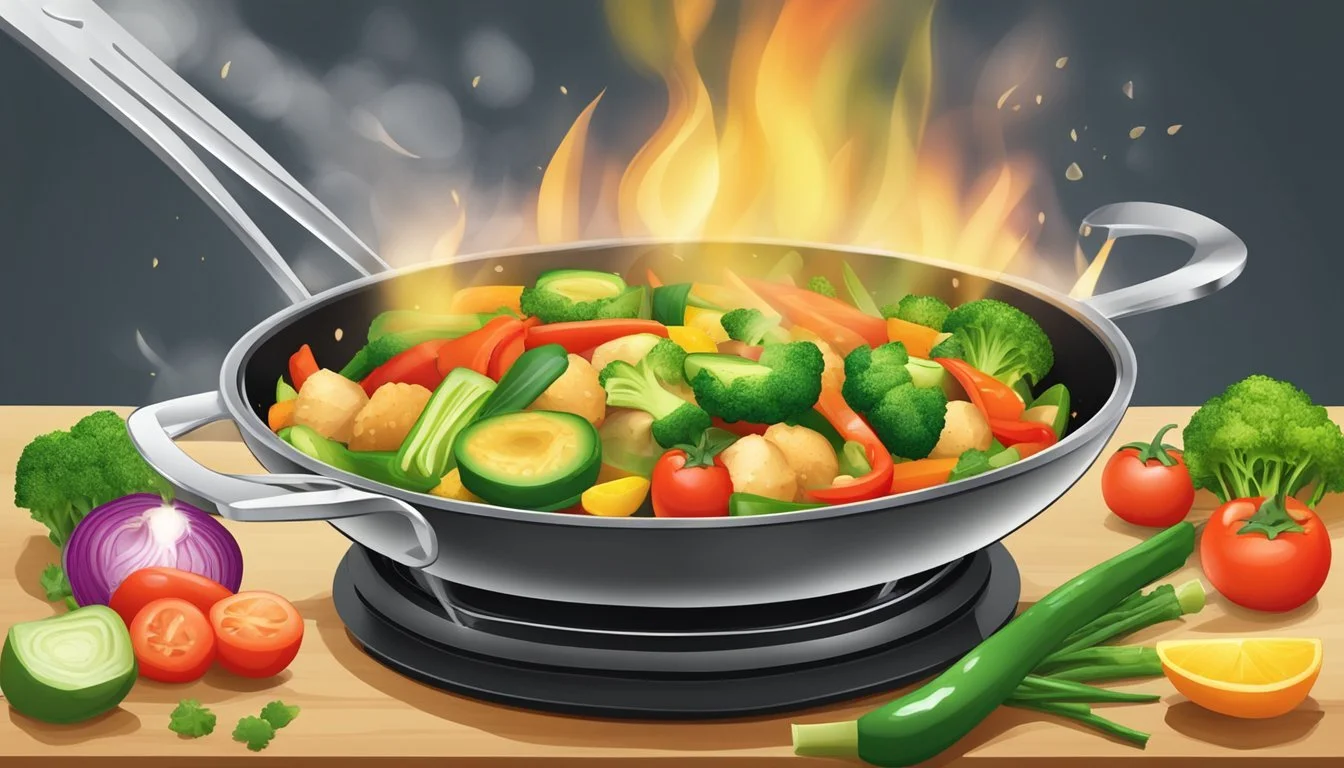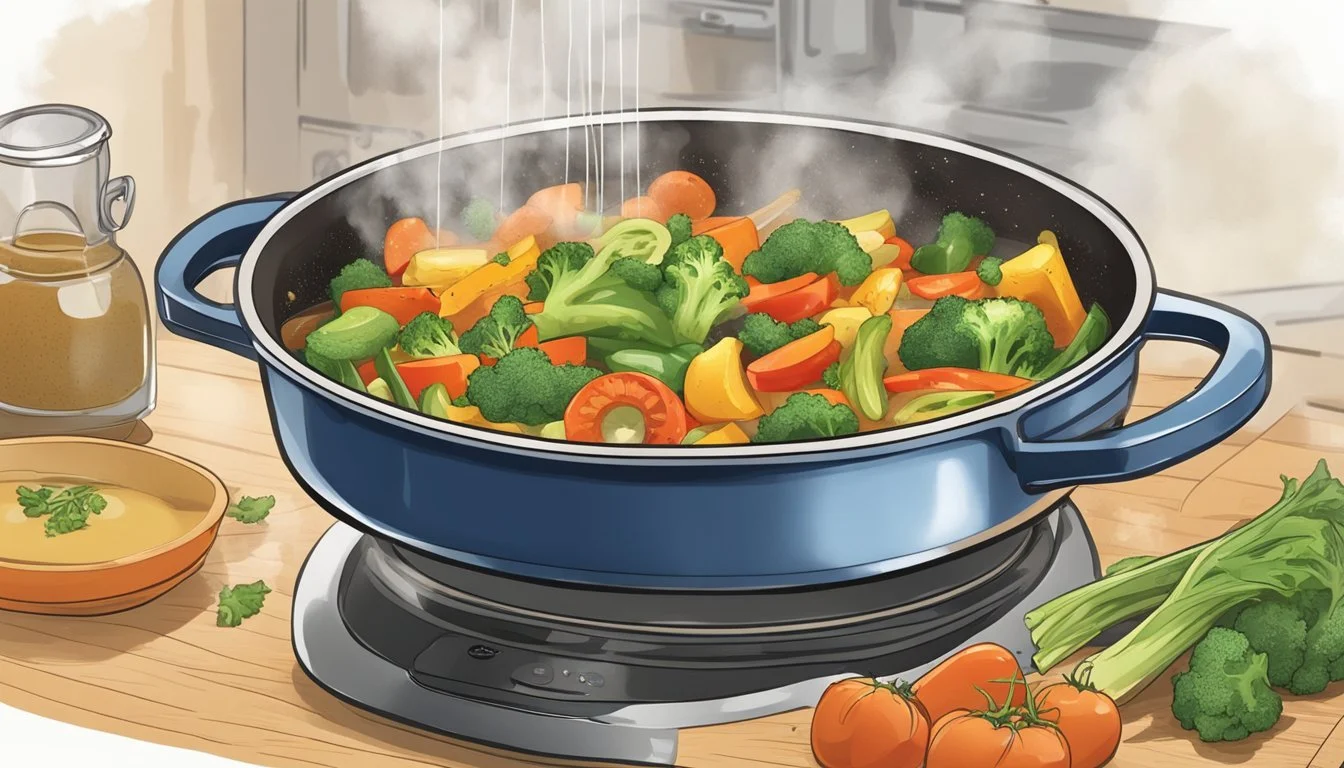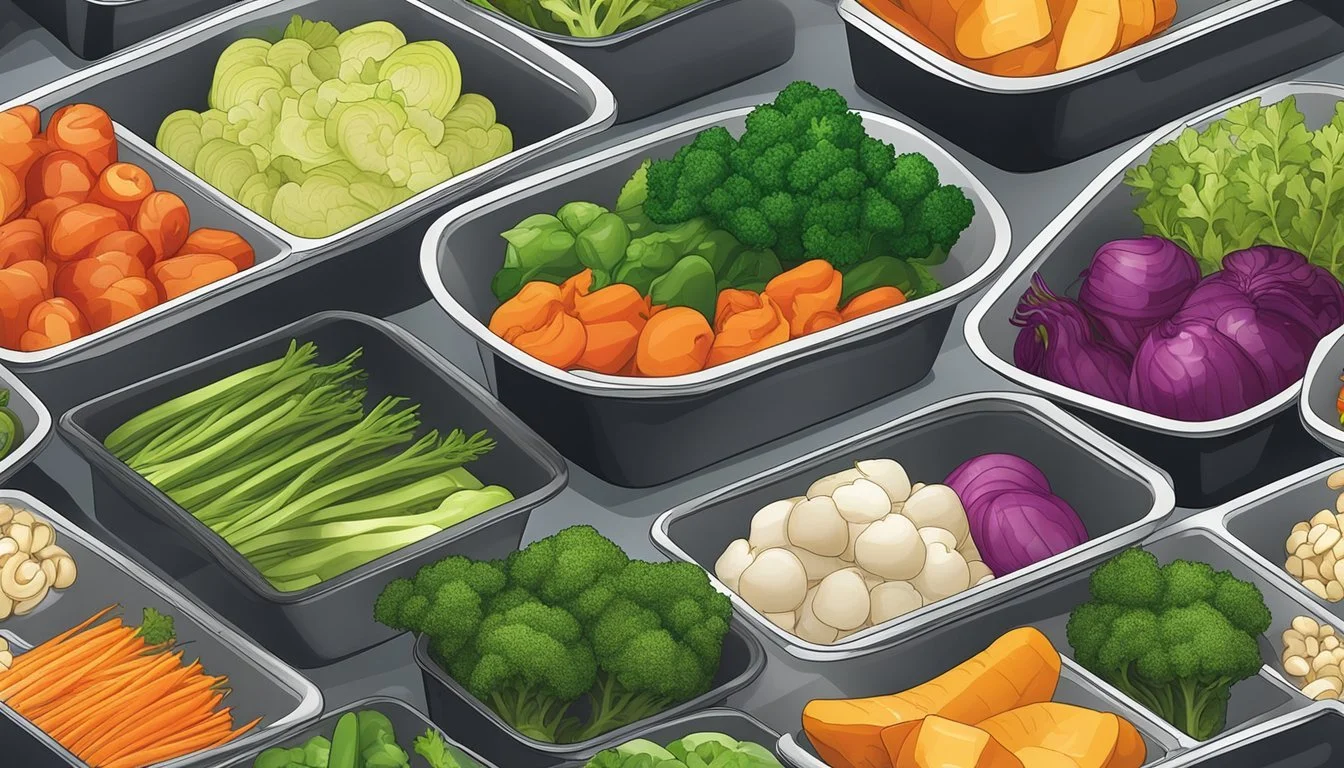How Long Do Gluten-Free Stir-Fry Vegetables Last?
A Clear Shelf Life Guide
When it comes to enjoying gluten-free stir-fry vegetables, knowing how long they last can be essential for meal planning and food safety. Properly stored, gluten-free stir-fry vegetables can last in the refrigerator for up to 3-4 days. Ensuring they are kept in airtight containers can help maintain their freshness and prevent cross-contamination.
Gluten-free stir-fry dishes are a delicious and nutritious option for those avoiding gluten. The vibrant mix of vegetables and flavorful sauces makes for a meal that is both satisfying and health-conscious. Keeping track of how long these vegetables remain fresh allows for better meal prep and enjoyment.
For those preparing gluten-free stir-fry vegetables, storing leftovers promptly and chilling them at the right temperature ensures they remain safe to eat. This practice not only maintains the quality of the food but also provides peace of mind for individuals with gluten sensitivities.
Understanding Gluten-Free Vegetable Stir-Fry
A gluten-free vegetable stir-fry is a dynamic dish that balances flavor and nutrition. This section covers the essential ingredients, various adaptations, and the health advantages associated with gluten-free stir-fry meals.
Key Ingredients for Gluten-Free Stir-Fry
The core of any gluten-free stir-fry consists of fresh vegetables. Popular choices include bell peppers, broccoli, snap peas, carrots, and bok choy. These veggies offer a mix of textures and vibrant colors.
To make the dish gluten-free, it's crucial to use gluten-free sauces such as tamari or coconut aminos instead of traditional soy sauce. Aromatics like garlic and ginger are also key for flavor.
A good oil with a high smoke point, like sesame or olive oil, is essential to stir-fry the ingredients effectively. Adding a protein such as chicken, beef, or tofu can make the dish more substantial.
Gluten-Free Stir-Fry Variations
There are many ways to modify a gluten-free stir-fry to suit different tastes and dietary preferences. For those following a Whole30 or Paleo diet, serving the stir-fry over cauliflower rice can be a great option.
In vegetarian or vegan versions, tofu or tempeh can replace meat as the primary protein source.
Using rice noodles instead of traditional noodles ensures the dish remains gluten-free while providing a satisfying texture. Additionally, experimenting with various vegetables like zucchini, mushrooms, and Brussels sprouts can offer new flavors and nutrients.
Health Benefits of Gluten-Free Stir-Fry
Eating a gluten-free vegetable stir-fry can offer several health benefits. The vegetables provide a high dose of vitamins, minerals, and antioxidants, which are essential for overall health and well-being.
This dish is naturally low in calories and high in fiber, which can aid in digestion and help maintain a healthy weight.
Swapping soy sauce for tamari or coconut aminos ensures that those with gluten sensitivities can enjoy the meal without adverse effects. The use of lean proteins and healthy oils contributes to a balanced diet, making gluten-free stir-frys an excellent option for health-conscious individuals.
Essential Cooking Techniques
Mastering gluten-free stir-fry vegetables requires specific techniques to achieve the best flavor and texture. Using the right equipment, selecting optimal oils, and creating a flavorful base are critical steps.
How to Use a Wok for Stir-Fry
A wok is an essential tool in Chinese cooking. It conducts heat efficiently, allowing vegetables to cook quickly at high temperatures.
Preheat the wok: Start by heating the wok on high heat for 1-2 minutes.
Add oil: Choose an oil with a high smoke point like avocado or grapeseed oil. Swirl to coat the wok.
Add ingredients: Begin with aromatics like garlic and ginger, followed by firm vegetables. Finally, add softer vegetables.
Stir constantly to ensure even cooking and avoid burning.
Optimal Oil Types for Gluten-Free Stir-Fry
Choosing the right oil impacts flavor and health. Avocado and grapeseed oils are great for stir-frying because of their high smoke points.
Avocado oil: High in monounsaturated fatty acids, it remains stable at high heat.
Grapeseed oil: Neutral flavor, excellent for those wishing to let the dish's other flavors shine.
Coconut oil: Adds a subtle sweetness but must be used with care due to its lower smoke point.
These oils ensure that the vegetables cook properly without imparting unwanted flavors.
Creating Flavorful Stir-Fry Base
A flavorful base sauce is crucial in stir-frying.
Ingredients: Combine gluten-free soy sauce (or tamari), rice vinegar, garlic, ginger, and a thickening agent like cornstarch.
Preparation: Mix these ingredients in a bowl until smooth.
Cooking: Add this mixture towards the end of cooking. Ensure the sauce coats all ingredients evenly.
For added depth, consider using coconut aminos as a soy-free option. Adjust sweetness or saltiness to suit your taste preferences.
Selecting and Preparing Proteins
Choosing the right proteins and marinating them properly can greatly enhance the flavor and texture of a gluten-free stir-fry. It's essential to use fresh, high-quality ingredients and appropriate seasoning to achieve the best results.
Best Proteins for Gluten-Free Stir-Fry
When selecting proteins, variety and quality are key. Chicken is a versatile and popular option, best used in bite-sized pieces for even cooking. Beef, particularly tender cuts like sirloin or flank steak, adds robust flavor and can be sliced thinly for quick searing.
For those preferring seafood, shrimp is an excellent choice due to its quick cook time and ability to absorb flavors well.
Tofu is another great protein, especially for vegetarians or those looking for a plant-based option. Firm tofu holds its shape well and can be cubed for even browning in a skillet.
Marinating Techniques for Proteins
Marinating proteins aids in infusing them with flavor and enhancing tenderness. A basic gluten-free marinade can include tamari sauce (a gluten-free alternative to soy sauce), garlic, ginger, and a bit of sesame oil for richness.
For chicken and beef, it's helpful to marinate for at least 30 minutes to allow the flavors to penetrate. Shrimp requires a shorter marination time—about 15-20 minutes—due to its delicate nature.
Tofu benefits from being pressed to remove excess moisture before marinating, ensuring it absorbs more flavor. Adding a thickening agent like cornstarch or arrowroot flour to the marinade can create a sauce that clings better to the proteins during cooking.
Using these techniques ensures the proteins are flavorful and tender, resulting in a more satisfying gluten-free stir-fry experience.
Gluten-Free Sauce Making
Creating gluten-free stir-fry sauces involves understanding the ingredients that can contain gluten and how to make safe, delicious alternatives for those with gluten sensitivities. This section will guide you through identifying gluten in common sauces and how to make your own gluten-free stir-fry sauce at home.
Sauces and Their Gluten Content
Soy sauce typically contains wheat, making it unsuitable for a gluten-free diet. Tamari, a Japanese soy sauce variant, is a popular gluten-free alternative. While traditional soy sauce and tamari serve similar purposes in cooking, gluten-free tamari provides the same umami flavor without gluten.
Another key ingredient to watch is oyster sauce, which also often includes wheat. Always check labels for hidden gluten sources such as modified food starch or malt vinegar. Opt for products explicitly labeled as gluten-free to ensure safety.
Homemade Gluten-Free Stir-Fry Sauce
Making your own gluten-free stir-fry sauce is straightforward and rewarding. Essential ingredients include gluten-free soy sauce or tamari, rice wine vinegar, and a sweetener like maple syrup. Coconut aminos can be a soy-free substitute if soy allergies are a concern.
To thicken the sauce without gluten, use cornstarch or arrowroot powder. Mix these with a small amount of cold water before adding to the sauce to avoid lumps. Combine all ingredients in a saucepan and heat until thickened.
Store the freshly made sauce in an airtight container in the refrigerator. It typically lasts up to a week, making it convenient for meal prep.
By preparing your own sauce, you control the ingredients, ensuring both flavor and safety for those with gluten sensitivities.
Storing Gluten-Free Stir-Fry Vegetables
Proper storage practices are essential to maintain the quality and freshness of your gluten-free stir-fry vegetables. By following these guidelines, you can ensure your dishes remain tasty and safe to eat.
Refrigeration Best Practices
To store freshly cooked gluten-free stir-fry vegetables in the refrigerator:
Cool the vegetables quickly to avoid prolonged exposure to bacteria.
Use airtight containers to maintain freshness and prevent other odors from impacting the vegetables.
Label the containers with the date of preparation.
Refrigerated stir-fry should be consumed within 3-4 days.
This approach helps maintain texture and flavor while ensuring food safety.
Freezing and Thawing Procedures
Freezing stir-fry vegetables can extend their shelf life:
Portion out the stir-fry into freezer-safe bags or containers.
Remove as much air as possible before sealing.
Label with the date.
Frozen stir-fry can last up to 2-3 months. When ready to use:
Thaw in the refrigerator overnight.
Reheat in a skillet over medium heat until warmed through.
Proper freezing and thawing can help retain the nutritional value and taste of the vegetables.
Customizing Your Gluten-Free Stir-Fry
One of the best aspects of a gluten-free stir-fry is its adaptability. Whether aiming for a vegetarian or vegan meal, or needing to accommodate other dietary preferences, there are endless options.
Vegetable Choices and Combinations
Broccoli, bell peppers, carrots, and snow peas make vibrant and nutritious additions to any stir-fry. These vegetables offer a mix of textures and complementary flavors.
For a truly customizable dish, consider adding mushrooms, zucchini, and baby corn. Each adds its own unique texture. Spinach or bok choy can provide leafy greens, completing the dish with added nutrients.
It's important to note that some vegetables like cabbage and brussels sprouts take longer to cook. Add those to the pan first, so they have more time to soften. In contrast, quick-cooking vegetables like snap peas or baby spinach should be added last to retain their crispness.
Mix and match vegetables based on what is available seasonally. For a soy-free option, consider using coconut aminos instead of traditional soy sauce. This still provides a savory depth without the gluten or soy.
Cooking and Serving Tips
Achieving the right texture and presentation for gluten-free stir-fry vegetables can make a significant difference in taste and enjoyment. Key elements include using a hot pan for even cooking and selecting the right garnishes.
Achieving the Perfect Stir-Fry Texture
To achieve a crisp-tender stir-fry texture, use a hot pan and high heat. This method keeps vegetables crunchy and preserves their color and nutrients.
Start by heating oil, such as avocado or sesame oil, in a wok or large skillet. Add vegetables that require longer cooking times first. Examples include onions, carrots, and bell peppers. Stir continuously to prevent burning.
After the longer-cooking veggies soften, add quicker-cooking ones like broccoli, snow peas, and mushrooms. Again, keep stirring. For a gluten-free stir fry, a mix of rice vinegar, garlic, and ginger can add depth without compromising dietary needs.
Presentation and Garnishing
Presentation begins with plating. Serve stir-fry over gluten-free noodles or rice. Arrange vegetables in an appealing manner.
For garnishing, consider fresh herbs like cilantro or basil. Add a squeeze of lime and a sprinkle of sesame seeds for added flavor and crunch. Toasted slivered almonds or crushed peanuts can also enhance texture.
Finally, drizzle a bit of extra stir-fry sauce before serving to keep flavors intact and add an appealing shine. This way, the dish not only tastes great but also looks inviting.









